Jeremie Averous's Blog, page 65
December 19, 2017
How Startups Are a Toolbox for Dealing with Uncertainty and Complexity
Eric Ries of Lean Startup fame defines a startup as “a human institution designed to create a new product or service under conditions of extreme uncertainty“. I find this definition extremely powerful. In reality startups are an organizational model to deal with uncertainty and complexity. And it can be actually seen as a tool in that context.
 Eric Ries goes further: “According to this broad definition, anyone—no matter their official job title—can be cast unexpectedly into the waters of entrepreneurship if the context of their work becomes highly uncertain. I argued that entrepreneurs are everywhere—in small businesses, mammoth corporations, health care systems, and schools, even inside government agencies. They are anywhere that people are doing the honorable and often unheralded labor of testing a novel idea, creating a better way to work, or serving new customers by extending a product or service into new markets”.
Eric Ries goes further: “According to this broad definition, anyone—no matter their official job title—can be cast unexpectedly into the waters of entrepreneurship if the context of their work becomes highly uncertain. I argued that entrepreneurs are everywhere—in small businesses, mammoth corporations, health care systems, and schools, even inside government agencies. They are anywhere that people are doing the honorable and often unheralded labor of testing a novel idea, creating a better way to work, or serving new customers by extending a product or service into new markets”.
This is why in his new book ‘The Startup Way‘ he explores the way the startup toolbox can be imported into larger and more institutionalized organizations. I tend to find that he sometimes stretches the concept a bit too much – don’t expect suddenly mammoth corporations to become an agile startup (that would end up like a mammoth in a porcelaine store I presume), still the idea is interesting and fruitful, if properly executed in the right remits.

December 16, 2017
How It is Necessary to Take Complex Problems One Chunk At a Time
I realize a lot of my value is sometimes to help clients faced with complex problems create smaller, more digestible chunks. To narrow down the scope to something manageable that can be readily be a scope for action.
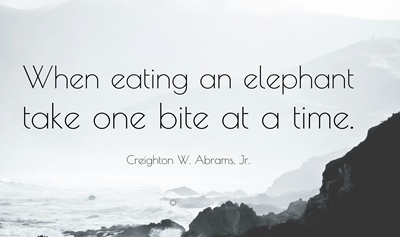 Of course this process is at the same time frustrating (all issues don’t get addressed, only the priority ones) and there is a definite risk of creating a local optimized solution that is not optimal at all for the entire system. However it is often the only way to progress into action.
Of course this process is at the same time frustrating (all issues don’t get addressed, only the priority ones) and there is a definite risk of creating a local optimized solution that is not optimal at all for the entire system. However it is often the only way to progress into action.
I realize that this act often requires leadership and the ability to take a risk, and is not natural to everyone. It is important to take the time address the major risk of creating a local solution incompatible with later developments by first going through an elucidation phase that is sufficient to clarify the system and avoid as much as possible this situation. And at the same time it is essential to progress and to resolve the priority issue that is under consideration.
Split the elephant into small chunks to eat it. Otherwise often we would not get anywhere. Take care about doing it right.

December 14, 2017
How Artificial Intelligence Still Requires Tutoring in the Real World
Complementing our optimistic post ‘How Artificial Intelligence Progresses by Leaps and Bounds‘ on the incredible advances of AI when applied to rigorous logical situations and combinatorial problems, we have had recently (2016) on an other hand a dramatic result about AI applied to real life conversation.
 A Microsoft AI chatbot went mad in less than 24h. The details are in this post from The Verge ‘Twitter taught Microsoft’s AI chatbot to be a racist asshole in less than a day‘.
A Microsoft AI chatbot went mad in less than 24h. The details are in this post from The Verge ‘Twitter taught Microsoft’s AI chatbot to be a racist asshole in less than a day‘.
This shows that AI is not yet ready to learn by itself without a tutor when it comes to the real world. Which also shows that a lot of our filters have to do with sound judgment and de facto social feedback. That will be quite difficult to emulate in the world of AI!

December 12, 2017
How Artificial Intelligence Progresses by Leaps and Bounds
The news in October have come up with this incredible feat: a new version of Google Deep Mind has evolved into the best Go player around learning by itself, and without looking at historical game databases. Some useful links: ‘The AI That Has Nothing to Learn From Humans‘ or ‘DeepMind AlphaGo Zero learns on its own without meatbag intervention‘.
And this happened in just 40 days! This feat was quite impossible to dream only months ago. An engineer from Google is quoted saying “This technique is more powerful than previous versions of AlphaGo because it is no longer constrained by the limits of human knowledge. Instead, it is able to learn tabula rasa from the strongest player in the world: AlphaGo itself.”
It looks like we are entering a new era of Artificial Intelligence at least for activities that are constrained by non-fuzzy logic and for which combinatorial calculation is the key.

December 9, 2017
How Telling People What To Do is Easy, but Building Real Change and Agreement is Hard
Today I am in for a rant: I am amazed at how people still believe that change is so easy it is enough to tell people what to do. To force them doing something different. In reality, deep and sustainable change has to be built over time over a wide agreement of the participating group.
 Not quite the right manner to implement change management
Not quite the right manner to implement change managementI am still called up to effectuate deep changes in organizations under the belief that the orders from the top combined with the industry best practice experience from a consultant will create a sustainable change of habits and ways of working. Worst is that many consulting firms do nothing to dissipate this illusion; they are too happy to work undisturbed to develop tools and processes that at the end will never get deployed for lack of knowledge and understanding.
This is too naive to be true, but believe me it still happens! (although not always exposed as directly). And we have some great examples at the moment in the world that this approach does no work: an American President that tells people what to do, and noting gets ever really done after the announcement.
Creating sustainable change requires a more subtle, engaging and inclusive approach that involves the people that will later implement those changes in their daily activities. This is why successful transformation programs are often longer and more resource-intensive at the start, because they need to involve more people. This investment redeems itself many times after during actual implementation.

December 7, 2017
How to Deal with Mood Issues When Facing Disruption during Change Efforts
To complement our post on ‘How to Deal with Inevitable Disruption in a Transformation Process‘, let’s talk a bit further about our mood. In another post ‘How to Get Back on Track with Motivation & Habits‘ Leo Babauta extends his reflections on the issue of one’s mood when facing an unexpected disruption in the midst of a change effort.
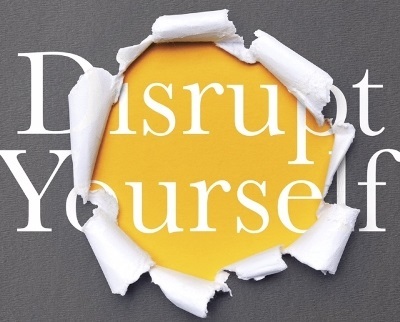 In addition to the derailment of our current efforts we are too often impacted in terms of mood and that is very often a killer for the change effort.
In addition to the derailment of our current efforts we are too often impacted in terms of mood and that is very often a killer for the change effort.
His main point is thus that “getting off track and getting back on track is all about mood.” He further proposes the following steps to regain confidence:
Admit there’s a problem, and ask a key question to remind us about the objective of the chain.
Take one small, easy step. Don’t think about the entire project of getting back on track. That’s too much, and can be overwhelming, which means we’ll never start.
Focus on getting any kind of victories.
Build long-term strength with small steps. If you build little victories, take small steps, and nurture your mood as in the previous steps … you’ll start to have a more solid habit or motivation for your project.
When faced with disruption in a change project, take care of your mood. Go exercise, change your mind. Look at the big picture, and take it a small chunk at a time. Go slow, and go steady.

December 5, 2017
How to Deal with Inevitable Disruption in a Transformation Process
When we decide to change ourselves or when we are in charge of a transformation project, things will never go as per the plan. Events will inevitably happen that disrupt our well-thought expected sequence of activities.
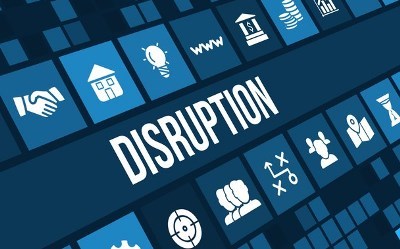 Leo Babauta in his post ‘starting, over and over again‘ deals with this issue in the context of trying to gain new habits, but of course the concept can be used in a wider range of situations.
Leo Babauta in his post ‘starting, over and over again‘ deals with this issue in the context of trying to gain new habits, but of course the concept can be used in a wider range of situations.
His recommendations are to avoid feeling bad about the disruption but rather to implement the following process:
When you get disrupted, notice any tendency to be harsh with yourself about it, or resentful towards life or other people about the disruption.
Shake off that feeling and instead, tell yourself that life is an uncontrollable river and you just have to flow with it.
Shrugging off any past mistakes, focus on starting again. Just like before, focus on taking the tiniest step.
If there’s any learning to take from the previous attempt, adjust your method to account for whatever obstacles you faced.
Above all, his recommendation is not to be too harsh on oneself. Disruption just happens. It is not the fault of anyone. So let’s move on and continue our transformation, becoming wiser in the process.

December 2, 2017
How to Do Our Work So Well It Becomes Art
Mitch Joel states in a blog: “When done well, your work becomes art.” “That’s probably the only sign of success that personally excites me. Fame? Money? Likes? Shares? Follows? When the work that you’re doing is, literally, considered art, it truly transcends.”
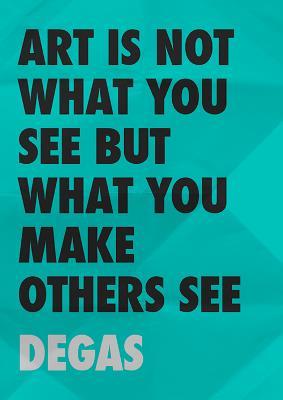 “This is one of the exact reasons why people laud business luminaries like Steve Jobs and Elon Musk. They elevated the ordinary of business to an art form (whether you love their brands or not). You can see this type of magic in everything from business to martial arts.”
“This is one of the exact reasons why people laud business luminaries like Steve Jobs and Elon Musk. They elevated the ordinary of business to an art form (whether you love their brands or not). You can see this type of magic in everything from business to martial arts.”
This is a great pointer towards excellence in whatever we are producing at work. Even more when one considers that art is an expression that aims at changing the way we look at the world, through the production of all sorts of emotional impact.
We should aim at work to produce stuff that changes the world. This should be the basic measuring stick of our success at work. Let’s thus have the mindset to produce art
And you, how are you measuring the impact of your work?

November 30, 2017
How Power Creates Responsibility (and Weakness Promotes Irresponsibility)
One of the issues we are facing as democracies is the rise of irresponsible requests from small groups. In fact, weak groups have nothing to lose: and they tend to become quite irresponsible. The weaker, the more desperate and the more irresponsible. A good illustration is the condition of trade unions in France, or the desperate gestures of people threatening to make their plant explode to avoid its closure.
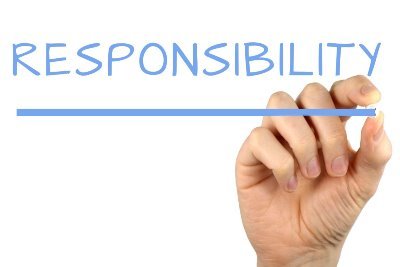 On the other hand, power almost always brings responsibility, although it might take a while for the people to perform this transition (as such it is typical that a political party coming into power after too many years in the opposition will take one to two years to become quite responsible).
On the other hand, power almost always brings responsibility, although it might take a while for the people to perform this transition (as such it is typical that a political party coming into power after too many years in the opposition will take one to two years to become quite responsible).
This observation bears also a way to deal with irresponsibility: give more power in certain areas to bring responsibility on the table. It can be an excellent negotiation strategy when facing a really irresponsible party.

November 28, 2017
How to Deal With Chaos
The question is widespread: how to deal with chaos, or to use a trendy word, with a VUCA world (Volatile, Uncertain, Complex and Ambiguous)?
 I like one answer provided by Leo Babauta in a blog post on how to deal with chaos: “When chaos and messiness come our way, it’s not necessarily a bad thing. It’s not inherently stressful and anxiety-inducing. It’s just that our minds don’t usually like these things. We want order and simplicity.
I like one answer provided by Leo Babauta in a blog post on how to deal with chaos: “When chaos and messiness come our way, it’s not necessarily a bad thing. It’s not inherently stressful and anxiety-inducing. It’s just that our minds don’t usually like these things. We want order and simplicity.
So the problem isn’t the external situation. It’s our internal ideals. We want order and simplicity, not to be interrupted, not to be overwhelmed. The ideal of orderliness is causing our frustration, stress, anxiety, not other people, not a chaotic situation.
The ideal of orderliness causes our difficulties. And we created the ideal. Therefore, we are causing our own difficulties.
The good news is that, if we created the ideal, we have the power to change it.”
The interesting part is to identify how our embedded ideal of orderliness and stability influences the way we look at the world. That is definitely something we need to overcome to thrive in the Collaborative Age, and that needs to be part of the education of every young generation: change is the new normal.





